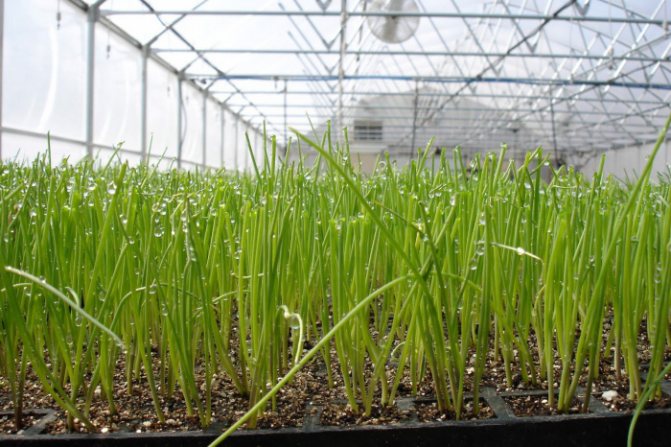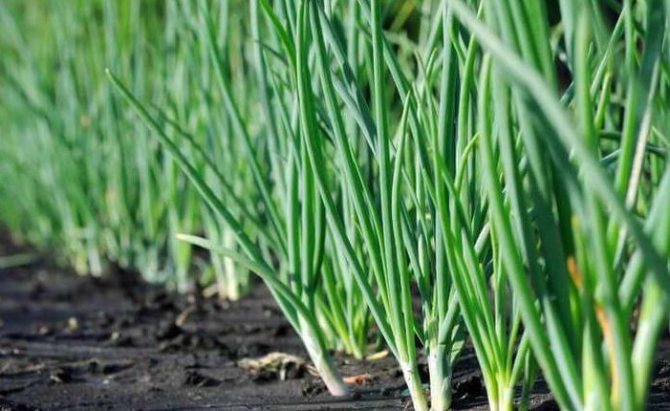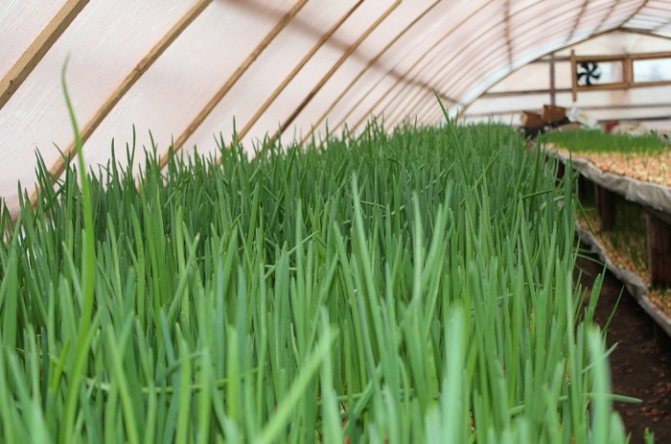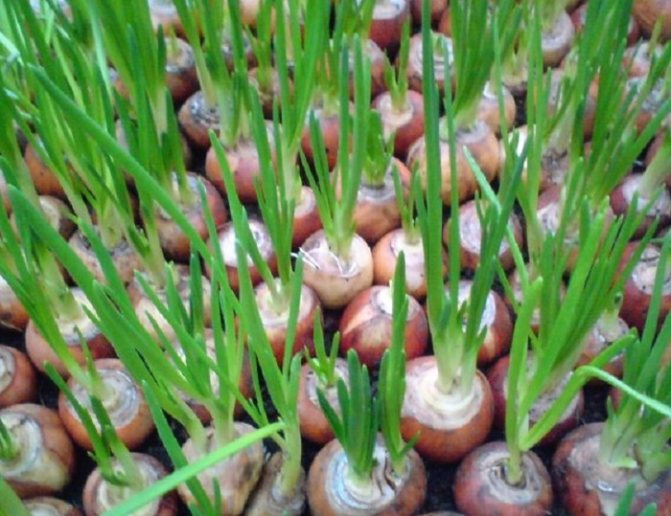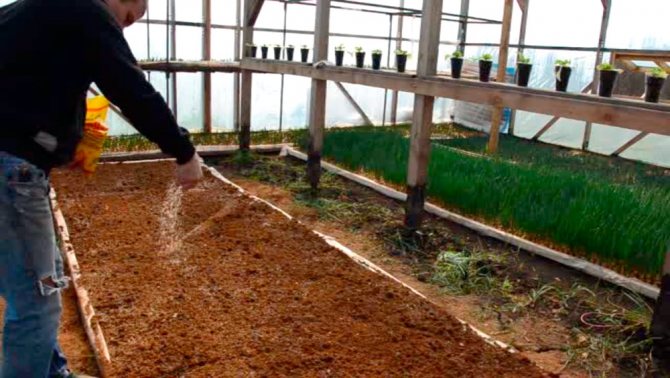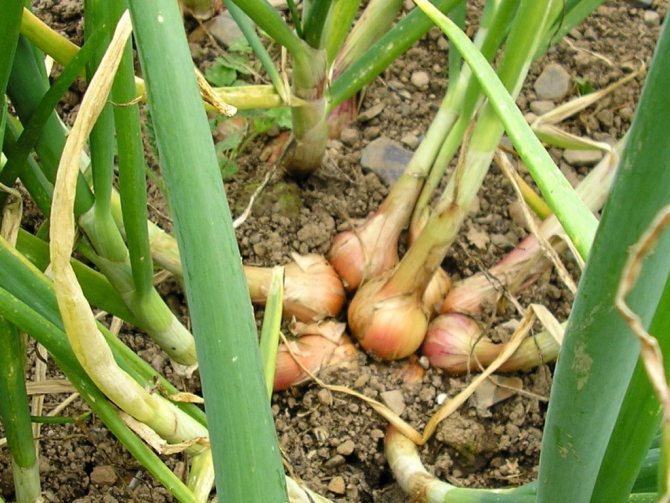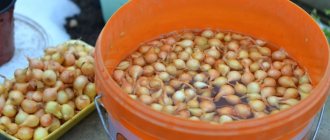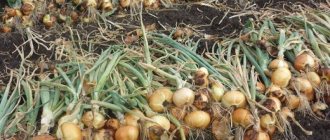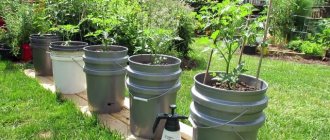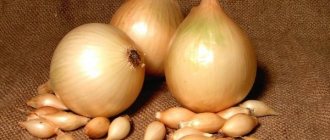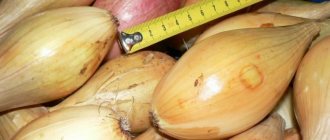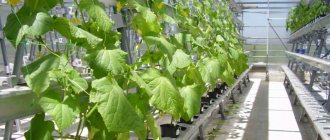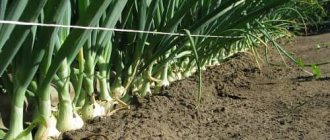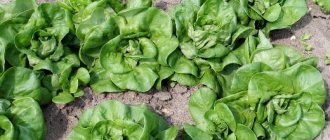Technologies for growing onions for greens in winter
The technology of growing onion feathers in winter is not difficult. It is enough to be at least a little familiar with the agricultural technology of cultivation. Additionally, you need to draw up a business plan and work in accordance with the set goals.
Benefits of growing onions on a feather in a greenhouse
Onions are the most affordable, unpretentious and cheap planting material for growing them on a feather. The variety is unpretentious in terms of care and gives an excellent harvest in a short time. This is the variety that inexperienced entrepreneurs start with.
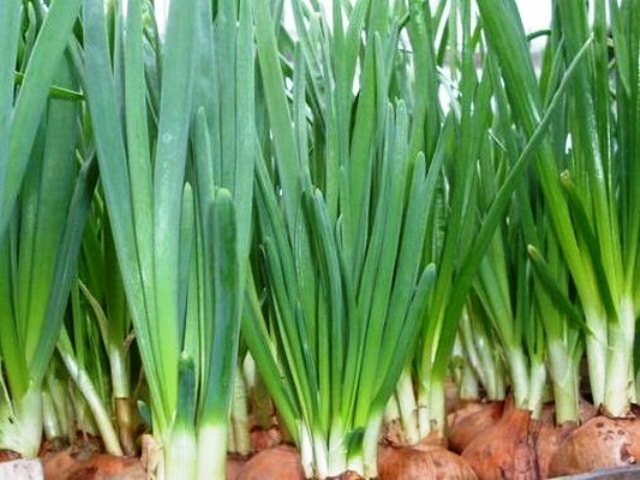
Growing onions is not a problem
Sale and sale of onions
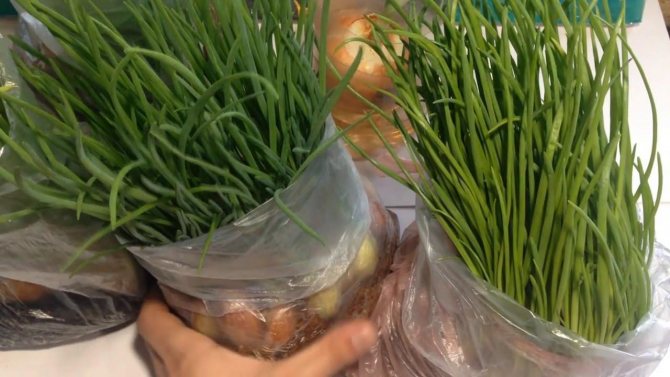

I begin to engage in industrial cultivation of green onions after preliminary calculations. A business plan is drawn up, which takes into account all the costs of purchasing seed material, water, electricity, heat.
The owner of the greenhouse must register as a private entrepreneur in order to be able to sell products:
- at wholesale depots;
- in their stores;
- On the market.
Feather is a perishable product, so it is beneficial to conclude supply contracts with the owners of outlets. In this case, it is easy to plan forcing the onions according to the delivery time specified in the contract.
Competition in the market is high, therefore, first they are determined with sales markets, then they invest in production.
The choice of varieties for growing green onions
To get a rich harvest and make money on your product, you should initially choose the right variety of onions. Experienced businessmen prefer the multi-primordial types:
- Leek. Has excellent taste and thick feathers. From 1 m² you can collect about 2.7 kg.
- Batun. Thin bright green feathers with a bright taste. You can make 3 slices. About 4 kg are collected from 1 m².
- Shallot. Thin feathers that do not fade for a long time under negative influence. From 1 m² comes 5 kg.
- Egyptian. The yield is up to 4.2 kg per 1 m². Resistant to low temperatures.
- Slime onion. Withstands up to 5 slices, while the aboveground part is quickly restored. Can be grown all year round.
- Chinese. Has excellent feather recovery rate after cutting. Produces a good harvest with a spicy garlic flavor.
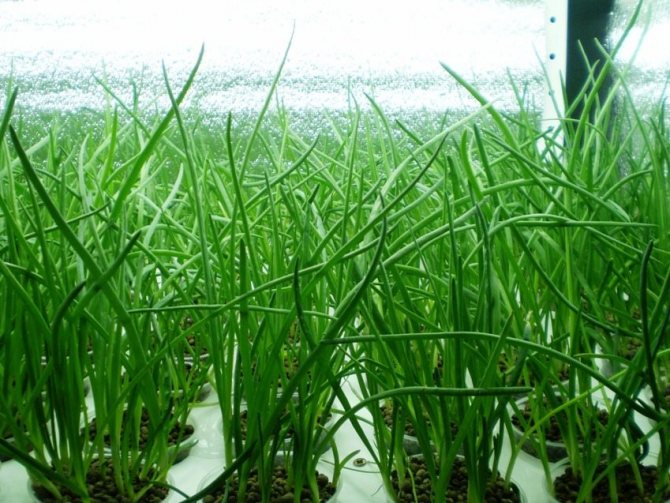

It is important to choose the right variety for breeding.
In order for the onion to grow normally in the greenhouse, you will have to provide the right conditions for the entire period. Otherwise, none, even the most hardy variety, will normally "bear fruit."
Soil preparation
Growing onions in a greenhouse in winter begins with soil preparation. It can be used multiple times, at least 3-4 times. The substrate can be prepared on the basis of garden soil or fine sawdust can be used.
Advice!
Garden land is taken from plots where tomatoes, eggplants, carrots, beets grew.
Fertilizers are applied to 1 m² of soil:
- superphosphate granules 30 g;
- crystals of sodium chloride 15 g;
- compost 8-10 kg.
Ash and ammonium nitrate granules are added if sawdust is used as a substrate. They are scattered on top. Ash is a deoxidizer and a supplier of trace elements, saltpeter feeds the bulbs with nitrogen. No other feeding is needed.
There are different technologies for growing green onions in a greenhouse in winter.Some involve the use of land (pavement, tape), others not (hydroponics, mats).
When planting onions in a greenhouse before winter, an important factor is the choice of a profitable, fast-growing variety. They are engaged in growing different types of onions for greens:
- onion;
- multi-tiered;
- batuna;
- slime;
- shallots;
- leek.
More often, it is economically justified to grow feathers from large onion heads, as the most common for buyers and quickly forming high-quality greens in winter in greenhouses. For forcing, bulbs of multi-primordial varieties or hybrids are purchased, which have a short dormant period.
The best varieties of onions for growing in winter on a feather in greenhouses:
- Karatalsky;
- Danilovsky 301;
- Rostov;
- Ryazansky;
- Bessonovsky;
- Strigunovsky;
- Mstersky;
- Spassky.
Planting bulbs of new varieties that give a lot of feather is justified:
- Universo F1;
- Supra;
- Centurion F1;
- Stuttgarten Riesen;
- The globe;
- Manas;
- Chalcedony;
- Elan.
Advice! Whenever possible in the summer, grow the appropriate suitable varieties of onions for forcing the feathers in the winter in a greenhouse on their own plot.
In the event that onions are planted with seeds directly into the soil, first you need to choose the appropriate type and varieties of onions. If you decide to grow onion, for example, then the varieties Maisky-7 and Gribovsky-21 are suitable; if there is a desire to grow onions, then you can take the seeds of the local Strigunovsky or Bessonovsky fruitful. After that, the seeds are washed and soaked for a day in lukewarm water.
The seeds are placed in the ground no deeper than 2 cm, while it is advisable to keep the distance between them at least 1 cm. It is permissible to sprinkle it with a small amount of peat or humus on top; in this case, ordinary soil is also suitable.
One of the conditions for obtaining a decent harvest in the future is top dressing. It can be produced twice over the entire period: immediately after planting or immediately before placing the seeds in the soil and 10 days later. As a fertilizer, ordinary manure, ammonium nitrate are suitable.
Both components are diluted with water in a ratio of 1:30. Some gardeners also like to add wood ash to the soil, but it is recommended to use it to enrich the soil before the crop is planted.


Onions love moisture, but too much water can harm them. Watering the soil is carried out with water at room temperature (approximately 25ºC) every few days as the soil dries up.
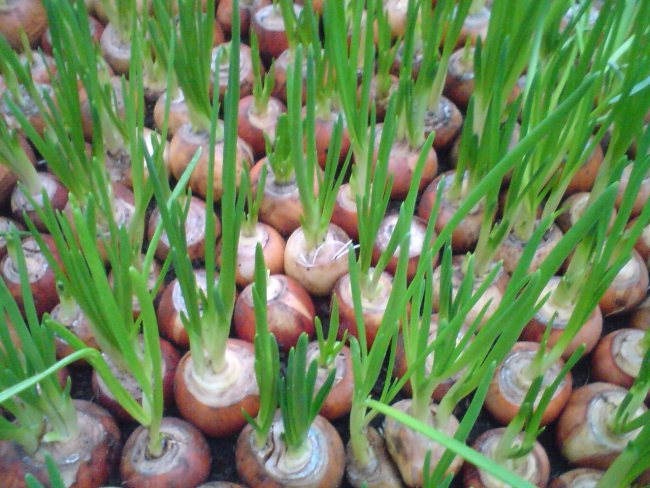

How to choose a variety of onions
Good cultivation of onions in a greenhouse and their yield depends to a large extent on the variety. At the moment there are several types of onions that are used by gardeners:
- Batun onion.
- Shnit.
- Slime.
- Shallot.
More details:
- The most unpretentious to care for is the variety of onions that has several tiers. These are slime onions and chives. These crops can also be grown in the winter season.
- The onion has a certain period of rest. It is about 1.5 months, but in November it can be planted in greenhouse soil. It produces an excellent harvest.
- Shallots have the longest resting period. After the seeds have ripened, they are planted in closed ground in December.
You can make seeds for growing onions in a greenhouse yourself. For this, onions are grown, and such actions are performed based on the variety of the onion itself. You can also use ready-made seeds.
The seeds do not germinate as quickly as the bulbs and do not yield too much. All seed bulbs need:
- Dry well.
- Go through (select rotten and soft).
After that, you can start planting onions.
Greenhouse requirement for forcing onions
Growing green onions in a greenhouse is impossible without creating normal indoor conditions.This is especially true in the winter from November to April, when greens are in demand.
What requirements should a greenhouse meet:
- In addition to daylight, you need to organize artificial. The light in the greenhouse should be bright and constant.
- Heating with temperature control capability must be present.
- The organization of drip irrigation will save time and ensure complete irrigation without errors.
- The onion rack system will allow you to take up the maximum space of the room.
Note! An excellent option would be a Siberian greenhouse for growing onions. The room is designed for high frosts, so there are simply no problems with lighting and heating in such a building.
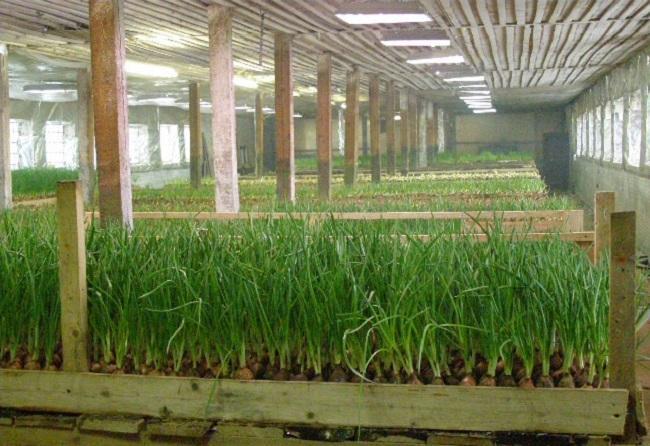

Greenhouse where onions are grown
Many entrepreneurs choose to build a durable polycarbonate greenhouse. It will allow you to organize conditions that meet all of the above requirements. For comparison, it is impossible to provide heating in structures covered with foil, and the construction of a glass version will be expensive.
Depending on the type of greenhouse construction, additional nuances should be taken into account. For example, if the greenhouse does not have a heating system, then cultivation can only continue from October to early December. At the same time, much depends on weather conditions.
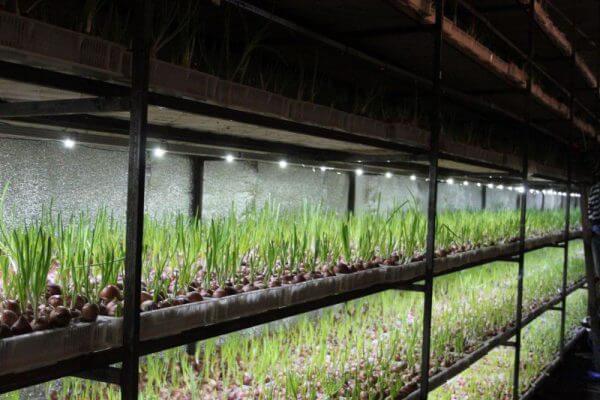

Additional lighting
Important nuances to consider
Of course, the above calculations are relevant provided that the implementation is well-organized. You shouldn't believe the popular sayings like “the main thing is to grow up, and there will be a buyer”. You will not find it yourself, you need to look for it, even more so - taking into account the competition. And for this you need to advertise in newspapers, distribute leaflets, stick up banners and just go to retail outlets and offer your goods. Experienced businessmen will confirm that the organizational moment is one of the most important, profitability depends on it. In summer it is 50%, in winter 30%. In addition, it is possible to organize an additional business, for example: the supply of packaging for greenery. Many supermarkets that follow their image will not refuse such products. The business of growing onions in the winter in a greenhouse is a huge opportunity for high profits, given the small start-up capital and a minimum of effort and time spent.
How to care for onions in a greenhouse
To get a lot of greens in winter, you need to know how to grow onions in a greenhouse. The quality and quantity of the crop is influenced by many factors - air temperature, watering, top dressing, the variety of planting material and much more.
- How much is growing
Growth time depends on the variety and room temperature. If you increase the indicators to +25 ° С, then the harvest can be obtained in 17 days.
Attention! At low temperatures, forcing can take up to 28 days.
- Temperature regime
In order not to disturb the high yield, you should carefully monitor the temperature indicators. During the day, the norm is +20 ° С, and at night +14 ° С.
- Watering
If hydroponics is installed in the greenhouse, then there is no need to monitor the irrigation system specifically, the system controls everything itself.
With the simplest arrangement of a greenhouse, you need to water once every 3 days. Use only warm water.


Automated watering
- Top dressing
Top dressing is done 7-9 days after planting or sowing. It is necessary to water the beds with a solution of 20 g of ammonium nitrate and potassium chloride, as well as 30 g of superphosphate. Dilute all this in 10 liters of water. There are special complex fertilizers in tablets of the same type.
Preparatory work
Greenhouse space is limited. Install racks for intensive use of each square meter of area. Multi-tiered feather cultivation saves space, increases yield.
Purchase of shelving
Racks can be made by hand from lumber or metal corners.It is easier to buy finished products, their cost will quickly pay off. We recommend purchasing racks with a shelf width of about 35 cm.
It is easy to work with such constructions:
- the soil warms up quickly;
- the onion grows quickly;
- easy to care for seedlings and cut crops.
In greenhouses where multi-level racks are installed, lamps are mounted on each level. Installing LED lamps (strips) reduces energy costs. The recommended power of LED luminaires is 25 W.
In greenhouses, fluorescent lamps with a power of 15 to 58 W can be used. At a specialized point of sale, gardeners are offered phytolamps. The spectrum of their radiation is close to that of the sun. If illumination is not required in summer, then it is necessary in winter greenhouses.
Watering and heating
For irrigation, warm, settled water is needed. By spending money on a drip irrigation system, gardeners make their work easier and save water. To heat the room, a heating system is built, it includes:
- heat source (boiler, stove, electric gas heater);
- pipe system.
How to cut onions correctly
In order not to damage the pen and leave its presentation, you need to cut it off correctly. To carry out this procedure, a special "fork" or a regular knife can be used. It is necessary to pry the onion with a “fork” and carefully pull it out of the substrate. Then cut off the green part with a sharp knife.
If the bulb is no longer to be used, then it is simply cut across and the greens are pulled out.
Attention! Green onions should not be harvested after watering.


Greenery slice
Greenhouse features
To cultivate onions, you will need a wide variety of equipment: from gloves to shovels. But the equipment is not difficult to acquire, you just have to contact a special store. But with the land on the site of the future greenhouse will have to work. It will be necessary to free the area for placing the onions from weeds. To do this, you need to enrich the soil with special fertilizers. For example, for one square meter, take one bucket of manure or droppings, fifteen grams of potassium chloride and thirty grams of superphosphate. Mix all this and distribute it evenly over the ground. Based on the size of the greenhouse, it is necessary to decide on its material and shape.
There will be no problem buying a ready-made greenhouse today. And if you wish, you can design it yourself. You can also choose the desired material: polycarbonate, glass or film. In any greenhouse, there is the possibility of airing through special vents. Circulating fresh air in the greenhouse will avoid the appearance of various onion diseases, as well as the appearance of mold and fungi.
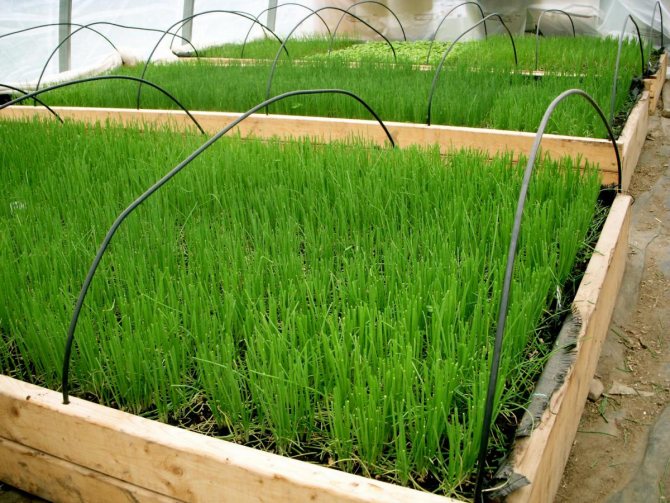

Greenery business
Green business has a long lead in terms of profit. Onions are grown on a feather from the beginning of October and lasts until mid-spring. The profitability of the enterprise is obvious. But additional capital investments are required in the development of the business, as well as official registration.
Why growing onions for feathers in a greenhouse is a good business idea
The profitability of such a business is high. Green onions contain many vitamins and are actively used in cooking as a decoration. In winter, feather cultivation ceases in all farms, so the product becomes scarce.
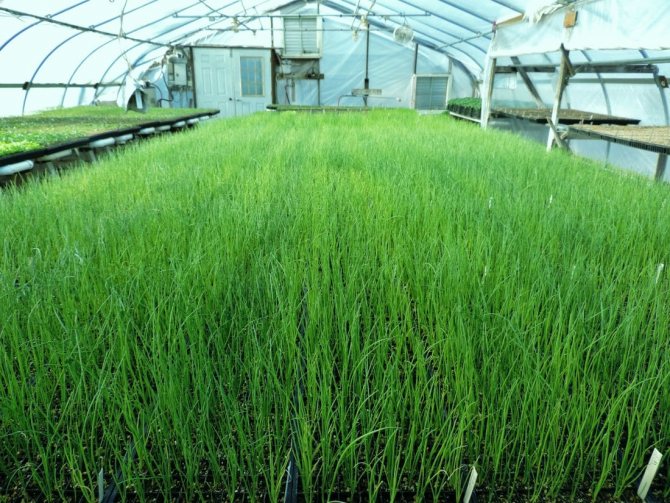

Greenhouse with green onions makes a good profit
How much money do you need to invest to start a business - the main cost items
To launch such a business, you first need to prepare at least a rough business plan. He will help assess the situation and determine how much money needs to be invested in the business.
Estimated estimate:
- Lamps for organizing additional lighting - $ 120-150.
- Arrangement of wiring around the entire perimeter - $ 30-50.
- Production of two-story shelving - $ 200.
- Drip irrigation system - $ 50-80.
- Auxiliary equipment - $ 75-100.
- Purchase of planting material - $ 150-200.
Important! The amount for the construction of the premises itself depends on the area, the material used and the organization of the heating system.
In total, you may need about $ 1000. If a hydroponic cultivation technology is used, the amount may increase by 2-3 times.
How to calculate financial profit
Naturally, in the process of growing, additional financial investments will be required. Payment for utilities, periodic purchase of new lots of planting material, replacement and repair of equipment. Under normal conditions, these costs can be about $ 200 per month.
The average cost of 1 kg of green onions in winter is $ 4-5. Depending on the variety of onions grown, 1 m² can be harvested from 2.5 to 5 kg. With simple mathematical manipulation, you can easily calculate your monthly profit.
Business registration
In order not to have problems with the law, it is imperative to register with the Tax Service, as this is a type of business. There are 2 options for registering an enterprise: LLC or individual entrepreneur. Each has its own characteristics.
To register, you need to contact the tax office or law office. After the official registration, it will be possible to sell the goods under a contract in any store.
The subtleties of the organization
It is not enough to grow onions, you also need to sell them. In addition to financial issues regarding investments, you need to think about marketing options. This is the very sensitive question.
With a large greenhouse area, its maintenance becomes beyond the power of one person. You may need to hire additional workers. And they already need to be drawn up in accordance with the Labor Code of the Russian Federation, and deductions to the Pension Fund should be made.
Sale and sale of onions
A novice businessman is looking for wholesale buyers, and an experienced one is trying to sell his goods on his own. Naturally, wholesale distribution implies a reduction in the cost of goods, but an independent sale will allow you to get the maximum income.


Onion Feather Bunches On Sale
Growing onions for greens in a greenhouse in winter is a very profitable business. The product is in great demand in the winter season due to its unique qualities and vitamin composition. Starting your own onion feather business will require a lot of thought and an optimal business plan.
Landing dates
Planting onions on greens before winter in a greenhouse takes place at different times, depending on the climatic zone, the selected variety and further use. Usually, onions can be grown all year round, provided the necessary conditions are met. The cultivation of onions by seeds is possible by direct application to the soil and by seedling. Common onions and their varieties are bred in small onions, the tops of which must be cut off for quick distillation.
- Onions and seeds must be sorted out before planting, rejecting non-viable ones. Be sure to warm them up at a temperature of 40 to 60 degrees for about an hour. This stimulates the growth of green shoots.
- For additional disinfection, the planting material is placed in a warm solution of potassium permanganate, and then dried. Instead of potassium permanganate, you can use special solutions, as well as substances that stimulate root growth.
- The distance between the rows should be maintained at least 15 centimeters, otherwise the plants will not have enough nutrients.
- The soil is moistened two days before planting; after planting, the onion is not watered. On average, watering is required every three days, and it is advisable to use sprayers or the drip method.
- The seeds are deepened into the soil by 1 - 1.5 centimeters, the onions by about the same. After planting, it is advisable to mulch the surface of the earth with straw, plant tops or sawdust. The seeds are additionally covered with a film, which must be removed after the first shoots appear.
- Further care comes down to watering, loosening and weeding from weeds.The temperature must be kept within a comfortable range, it is imperative to ventilate the room.
With this technology, even a small greenhouse can be harvested quite a decent harvest. Onions on a feather can be grown on racks in several rows if all plants are provided with the same illumination. In addition to the benefits for the family, this can be a good business idea, in addition, other vegetables can be grown along with onions: cucumbers, tomatoes, zucchini, cabbage, lettuce.
You can grow onions indoors several times. It takes about a month to forge one batch of onions. For an uninterrupted supply of greens, the heads are planted every 2 weeks from October to April.
Basic rules for making dressings
When introducing substances into the soil, a few simple rules are followed. Be sure to observe the timing of fertilizing and the dosage of substances. The first treatment is carried out during the germination of bulbs or seeds, when the shoots reach 5 - 7 cm. Subsequent - with an interval of 2 - 3 weeks.
Attention! If the plants look oppressed, then additional application of substances is required.
Onions are fed in the morning or evening. The soil is preliminarily watered so that the nutrients are better absorbed. The mineral solution must not come into contact with feathers and bulbs. If this happens, the plants are watered with clean water.
For feeding green onions, minerals and organics are chosen. It is best to alternate between different types of fertilizers. When receiving working solutions, the proportions and dosages are observed. An excess of fertilizers in the soil negatively affects the development of onions, as does their lack.


Varieties and hybrids of onions for forcing in greenhouse conditions ↑
It is best to drive out multi-bud varieties and hybrids of onions (early and early ripening), with a short growing season and dormant period. The most common onion for forcing is onion, the varieties of which in the regions of the Russian Federation are more than 70.
Strigunovsky local, Spassky local improved, Danilovsky 301, Karatalsky, Bessonovsky local, Mstersky local, etc. are considered the best varieties and hybrids for forcing on a feather. Of the new varieties most suitable for forcing, Globus, Stuttgarter rizen, Centurion F1, Supra, Universo F1 can be distinguished.
For a family, in addition to onions, other types of onions can be grown for greens: leek (synonym for pearl), shallots, chives (chives), slime, multi-tiered (Egyptian), batun (Tatar, sand). All of them are distinguished by their delicious taste, light garlic aroma, high content of trace elements and vitamins. A long green feather (leaves) remains tender for a long time; up to three cuts of greens can be eaten with perennials. Leek is called pearl for its whitish, very tasty stem.
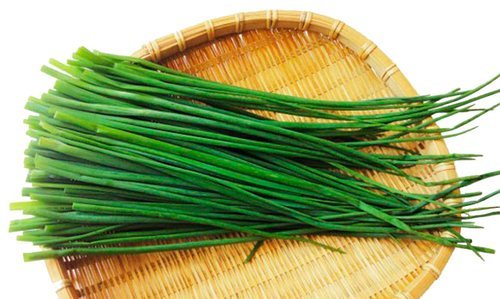

Chives
If there are no local zoned varieties (they are included in the name of the variety), you can offer for forcing in industrial quantities, varieties Arzamassky, Black Prince, Yantarny, Bessonovsky, Troitsky. The best varieties for industrial forcing are considered to be Emerald Island and Parade. The Parade variety stands out especially. When forcing on greens, it forms a juicy and sweet feather, is not damaged by pests, and tolerates drought and frost well. It does not need additional nutrition with good fertilization for planting seedlings or sowing with nigella.
The range of varieties with attractive properties and indicators of product quality in onion seed catalogs with brief characteristics of economic purposes is updated annually. You can choose the variety or hybrid that you like the most according to the description.
Technologies
Planting plants for a harvest of green feathers can be done year-round, the harvest is obtained in a month. For the continuity of the process, a new planting should be done every two weeks.
Before planting the material, you need to prepare by selecting small bulbs and removing excess husks. You don't have to throw away the husk - it will be a valuable fertilizer for other crops. Then you need to soak them in warm water for 12 hours, then dry. The upper part of the bulb is cut off for quick germination of greens. Read about the use of husks for the garden here.
Various cultivation methods are practiced: pavement, tape, or use the hydroponic method:
- Using the bridge method, the onions sit very tightly, slightly pressed into the ground. This saves labor costs by eliminating weeding, loosening and mulching. This method is most effective when using shelving and drawer landings. The soil is pre-enriched with fertilizers. The consumption of planting material is 10 kg per sq. meter;
- Tape. The onion is planted in furrows, the distance between the plants is 3 cm, between the furrows - 20 cm. Seeds are planted in the same way, which are then thinned out. This method requires weeding, loosening and sprinkling with peat;
- Hydroponic method onions are cultivated with special equipment. It consists of a container filled with water and a lid with special holes for planting onions, equipped with a compressor with a spray. It is possible to independently manufacture such equipment. For root growth, the temperature of the liquid is maintained at +20 degrees, then increased to +25 degrees to accelerate growth. For easier maintenance, use an aquarium heater. Light should be avoided on the roots of the bulbs, which is achieved by tightly fitting the lid to the container. Bubbled with a compressor for 12 hours.
For the successful cultivation of onions, it is necessary to organize the necessary care, which consists of the following procedures:
- abundant watering after planting and maintaining a comfortable temperature;
- two weeks later, the ridges are watered with a manganese solution to avoid mold and other diseases;
- it is necessary to remove substandard bulbs;
- regularly ventilate the greenhouse, while avoiding drafts;
- weekly watering with warm water.


To grow sly greenhouses, regular watering, adherence to the temperature regime and air access to the greenhouse are required
In the case of preliminary application of fertilizers before planting in the ridges, feeding at the time of cultivation is not required.
For sale, the harvested crop is packaged in 50 g packs, for wholesale, packaged onions are packaged in kilogram bundles.



